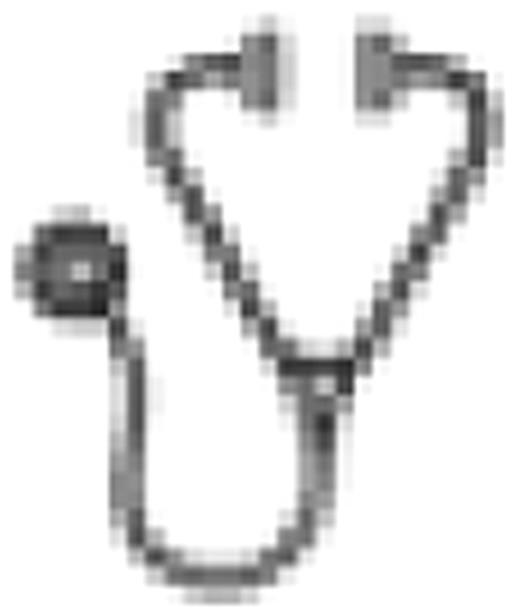Abstract
Abstract 363
Matched unrelated donor stem cell transplantation (MUD-SCT) has recently become a therapeutic option for patients with B cell diffuse large cell lymphoma (DLBCL) who fail other conventional therapies and do not have a matched sibling donor available. We present retrospective data of 473 DLBCL patients, 285 males and 188 females, aged 18 to 69 years (median 46 years), treated with matched sibling (n=301) or matched unrelated (n=172) SCT between January 2000 and December 2007 and reported to the EBMT registry. Median time from diagnosis to allograft was 25 months (range 2 – 203). Fifty-seven percent of the patients had failed previous autologous SCT, and 12% were transplanted in chemorefractory disease. After a median follow up of 41 months, the estimated 3-year non-relapse mortality (NRM), relapse rate (RR), progression free survival (PFS) and overall survival (OS) for the whole series were 37%, 32%, 31% and 40%, respectively. There were no statistically significant differences in patient age, disease status at transplantation, stem cell source and intensity of conditioning regimen between the Sib and the MUD cohorts (summarized in Table 1).However, a higher number of patients undergoing MUD have already failed an autograft (66% vs 52%, p=0.004), and T cell depleted grafts were more frequently used in the MUD cohort. Acute GvHD occurred in 48% of patients treated with a sib allograft vs 54% in those receiving a MUD (p=n.s). Interestingly, there were no statistically significant differences in NRM and RR between the Sib and the MUD groups (3 yr NRM=38% vs 37%, RR approached 38% vs 34%), resulting in a similar 3-year PFS and OS (32% vs 29% and 42% vs 35%, respectively). Multivariate analysis identified refractory disease (p = 0.001, RR 3.2; CI=1.3-3.5), poor performance status (p = 0.017, RR 1.9; CI=1.1-3.4) and age at transplantation > 50 years (p = 0.015, RR1.5; CI=1.1-2.1) as independent adverse prognostic factors for NRM and time from diagnosis to SCT < 36 months (p = 0.02, RR 1.5; CI=1.1-2.1), a previously failed autologous SCT (p = 0.026, RR .4; CI=1.1-1.9), refractory disease (p = 0.003, RR 2; CI=1.3-3.1), poor performance status (p = 0.0001, RR 3.5; CI=2.1-5.6) and T cell depletion (p = 0.001, RR 2; CI=1.3-2.9) as adverse prognostic factors for RR. A previous autologous SCT, poor performance status and refractory disease at transplantation were found to be significantly associated with a shorter PFS (p=0.04, RR 1.3; CI=1-1.6; p=0.0001, RR 2.4; CI=1.6-3.4; p=0.000,RR 2.1; CI=1.5-2.9, respectively) and refractory disease (p=0.0001, RR 2.2; CI=1.6-3.1) and poor performance status at the time of SCT (p=0.0001, RR 2.5; CI=1.7-3.6) with a shorter OS. Patients allografted from MUD tended to have a slightly increased risk of overall mortality in multivariate analysis, but this was not statistically significant (p=0.06, RR 1.2; CI=0.95-1.6). In conclusion, MUD SCT provides a curative option, not significantly inferior to that obtained with a matched sibling transplant, for selected patients with DLBCL who have failed conventional therapies, including autograft. Similarly, the type of conditioning regimen was not found to have a significant impact on patient outcome.
Clinical characteristics Sib vs MUD
| . | Sib (n = 301) . | MUD (n= 172) . | p . |
|---|---|---|---|
| Age (median, years) | 46 | 45 | N.S. |
| Previous ASCT | 48% | 33% | 0.004 |
| Refractory disease | 12% | 12% | N.S. |
| Poor P.S. | 13% | 7% | 0.06 |
| RIC/CC | 57%/43% | 56%/42% | N.S. |
| SC source BM/PB | 20%/80% | 22%/78% | N.S. |
| ATG/ALG | 15% | 46% | <0.001 |
| in vivoüT-cellüdepletion | 12% | 20% | 0.03 |
| ex vivoüT-cellüdepletion | 5% | 12% | 0.03 |
| . | Sib (n = 301) . | MUD (n= 172) . | p . |
|---|---|---|---|
| Age (median, years) | 46 | 45 | N.S. |
| Previous ASCT | 48% | 33% | 0.004 |
| Refractory disease | 12% | 12% | N.S. |
| Poor P.S. | 13% | 7% | 0.06 |
| RIC/CC | 57%/43% | 56%/42% | N.S. |
| SC source BM/PB | 20%/80% | 22%/78% | N.S. |
| ATG/ALG | 15% | 46% | <0.001 |
| in vivoüT-cellüdepletion | 12% | 20% | 0.03 |
| ex vivoüT-cellüdepletion | 5% | 12% | 0.03 |
ASCT. Autologous stem cell transplantation; PS. Performance status; RIC. Reduced intensity conditioning; CC. Conventional conditioning; SC. Stem cell; BM. Bone marrow; PB. Peripheral blood; ATG/ALG. Anti-thymocyte globulin/ALG. Anti-lymphocyte globulin.
No relevant conflicts of interest to declare.

This icon denotes an abstract that is clinically relevant.
Author notes
Asterisk with author names denotes non-ASH members.

